While stars like Vini Jr., Paquetá, and Bruno Guimarães begin to perform among the world’s best, the attention shifts to the next generation of Brazilian talent. One of the most promising players in this group is 18-year-old Matheus França, from Flamengo. Although he hasn’t had many opportunities in the senior team, Matheus has certainly impressed in Flamengo and Brazil’s youth teams, getting on the radar of the likes of Real Madrid and Man City.
Unlike Vini Jr. or Paquetá, Matheus França’s talent is not seen through his flair or dribbling. In his youth career, França’s goal involvement and attacking output have been very good and fairly consistent, and his awareness and intelligence are the main factors behind this success. In this scout report, we conduct a tactical analysis to determine what makes Matheus França such an exciting prospect. More specifically, we look at França’s tendencies and characteristics to determine his strengths, areas to improve, and what kind of tactics he would best fit in.
Positioning
Matheus França is a rather versatile player, being able to play anywhere in attack. The Brazilian has great speed and can certainly play on the wing as he did in his youth career. Being right-footed, he would often feature on the left-wing cutting inside. However, he is most effective through the centre. Whether as a false-nine or a more attacking number 10, Matheus is able to dictate the attack and constantly create space and chances. His career heatmap below illustrates his versatility, filling nearly all of the attacking third.
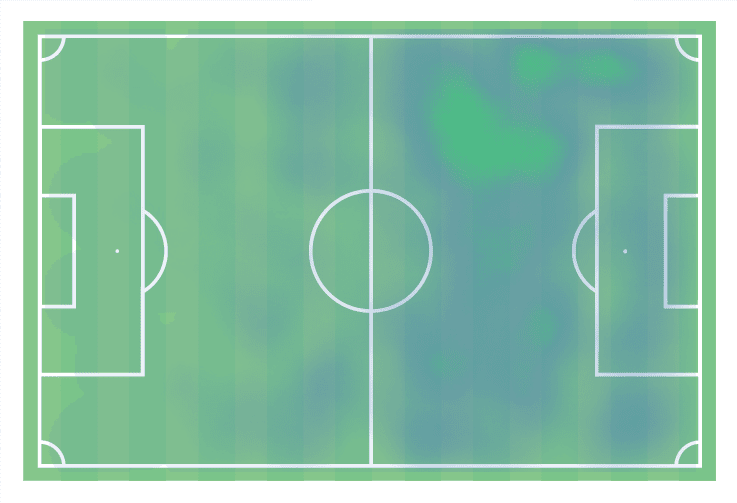
As noted, Matheus França’s game is built around his intelligence. Through his movements, vision, awareness, and more, he is able to be very effective in the attack. In this analysis, we will break down his tendencies throughout different phases of the game to illustrate how he plays and why he is so effective.
Progression
Matheus França plays a key role in connecting the midfield to the attack. His involvement is the glue that has allowed his teams to attack with success. While playing as a centre-forward or attacking midfielder, Matheus will find gaps within the defensive organisation to receive the ball before progressing it further. His ball progression map below illustrates how he receives the ball deeper into the midfield and progresses it into the final third.
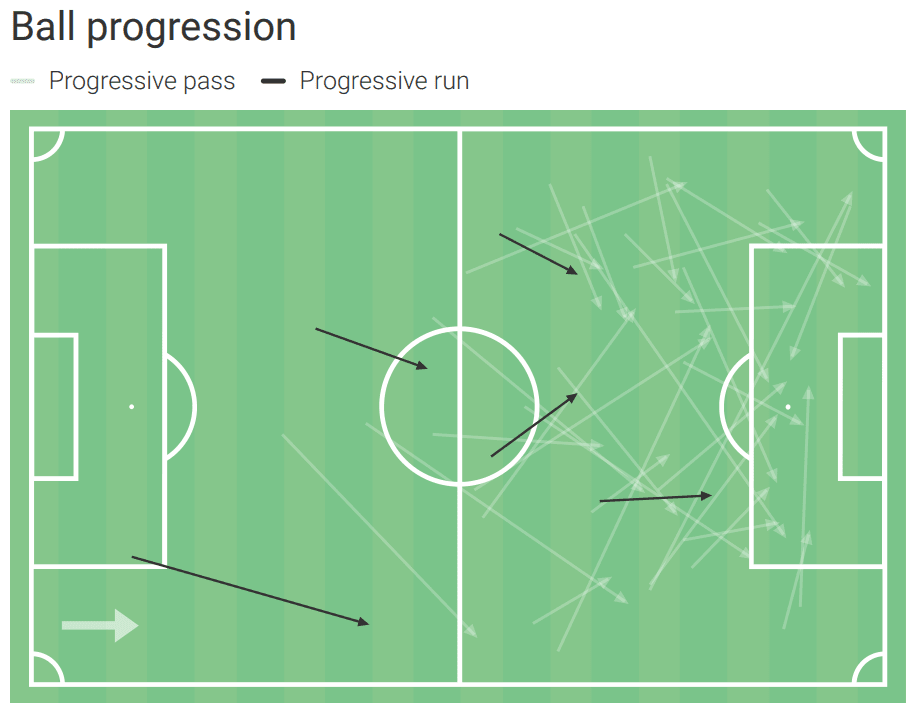
In the instance below, Flamengo try to break down Floresta’s low defensive block. As the centre-back carries the ball in the midfield, Matheus checks in to receive the ball between Floresta’s defensive lines.
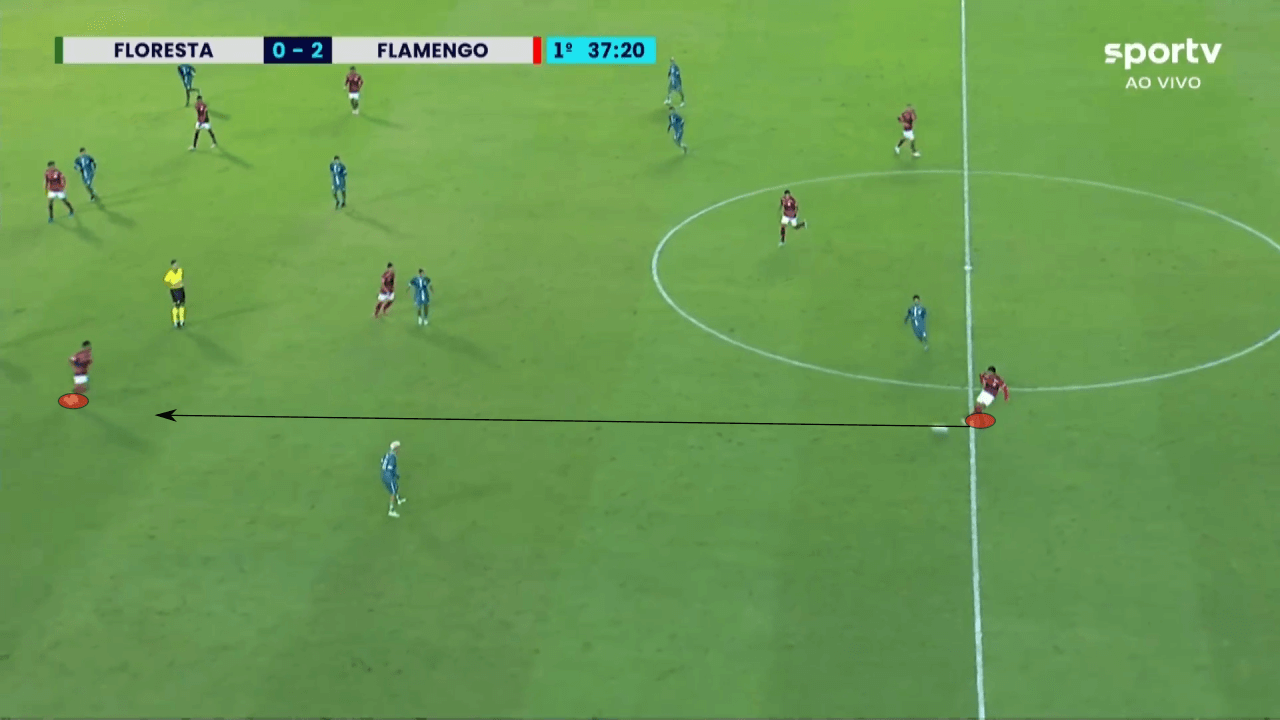
After receiving the ball, he quickly turns and plays his teammate into the wide channel. The simple movement to make himself available between lines and play his teammate wide allowed his team to progress from the midfield line to the final third with space.
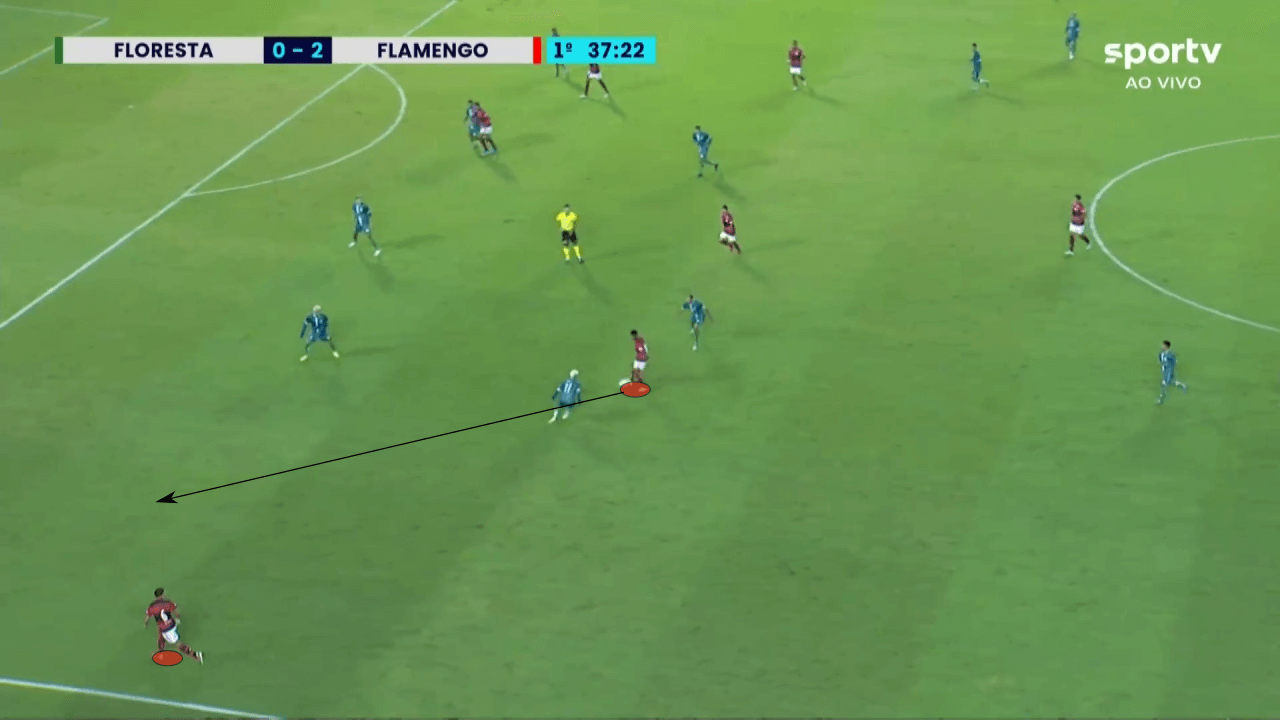
Matheus’ vision and passing ability are also impressive. The freedom to roam centrally and get involved in possession allows him to showcase these abilities and create very good chances. In addition, strength is a significant part of França’s game. In various scenarios, he is able to use his body effectively to either maintain or win possession. In the instance below, he uses his strength to win the duel against Floresta’s player.
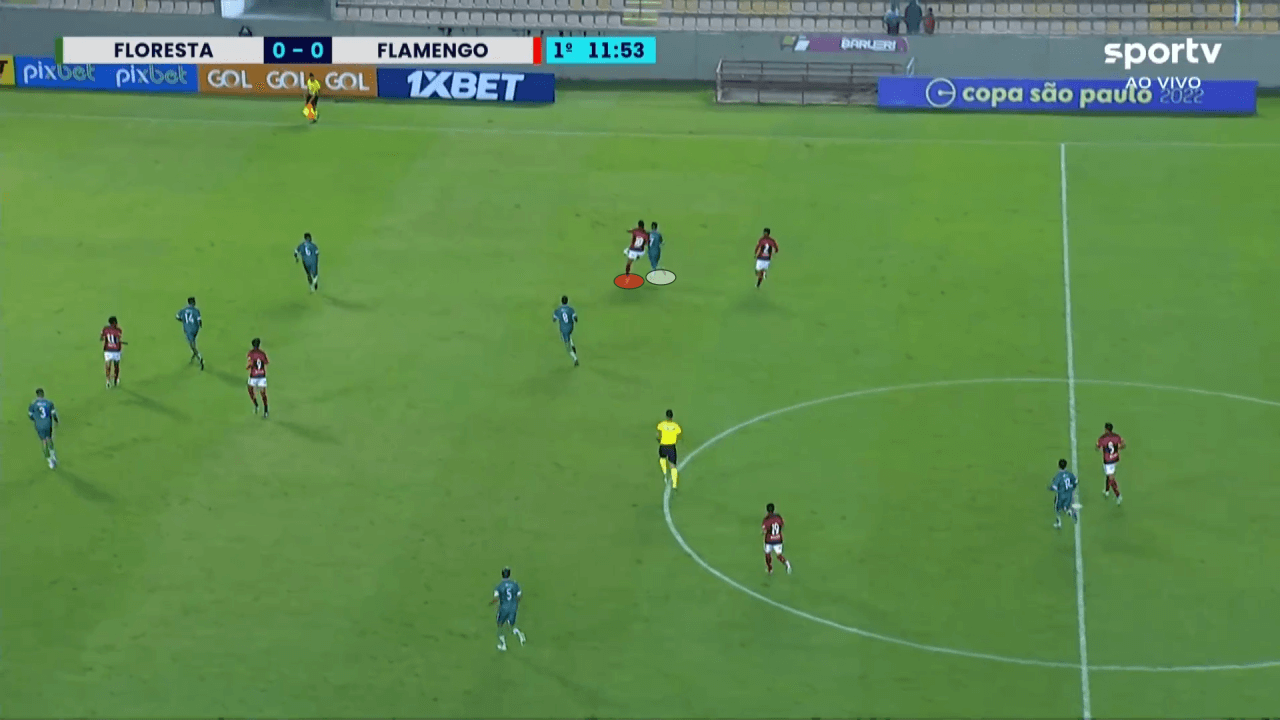
After the opposition player falls to the ground, França has time to pick out an excellent pass into the box. The centre-forward is able to bring it down and score Flamengo’s first goal of the night.
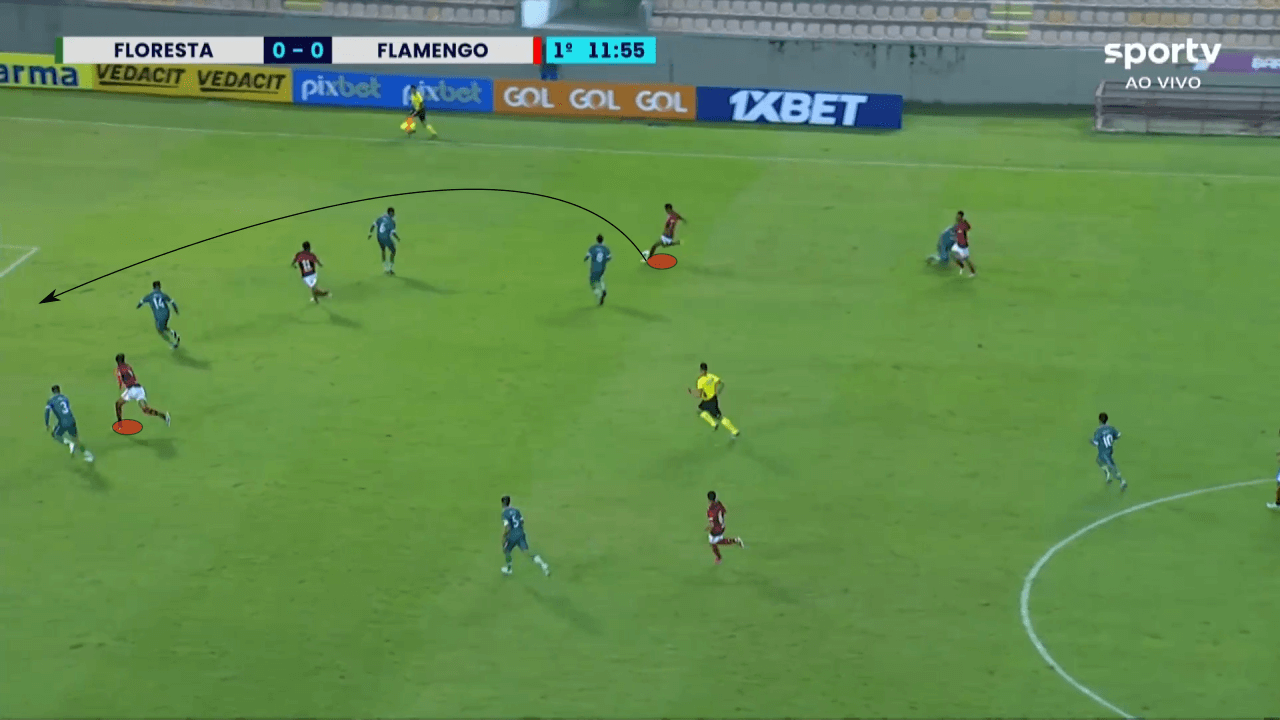
Matheus also constantly looks to switch the focus of the attack. He is able to play long balls and looks for them quite often. This is extremely helpful in getting away from pressure and attacking space. In the example below, França plays a long ball to the opposite side, where his teammate can bring it down and attack the open space. One area to improve, however, is driving the balls more rather than floating them. In some cases, Matheus will float it just too much, allowing time for the defence to shift over.
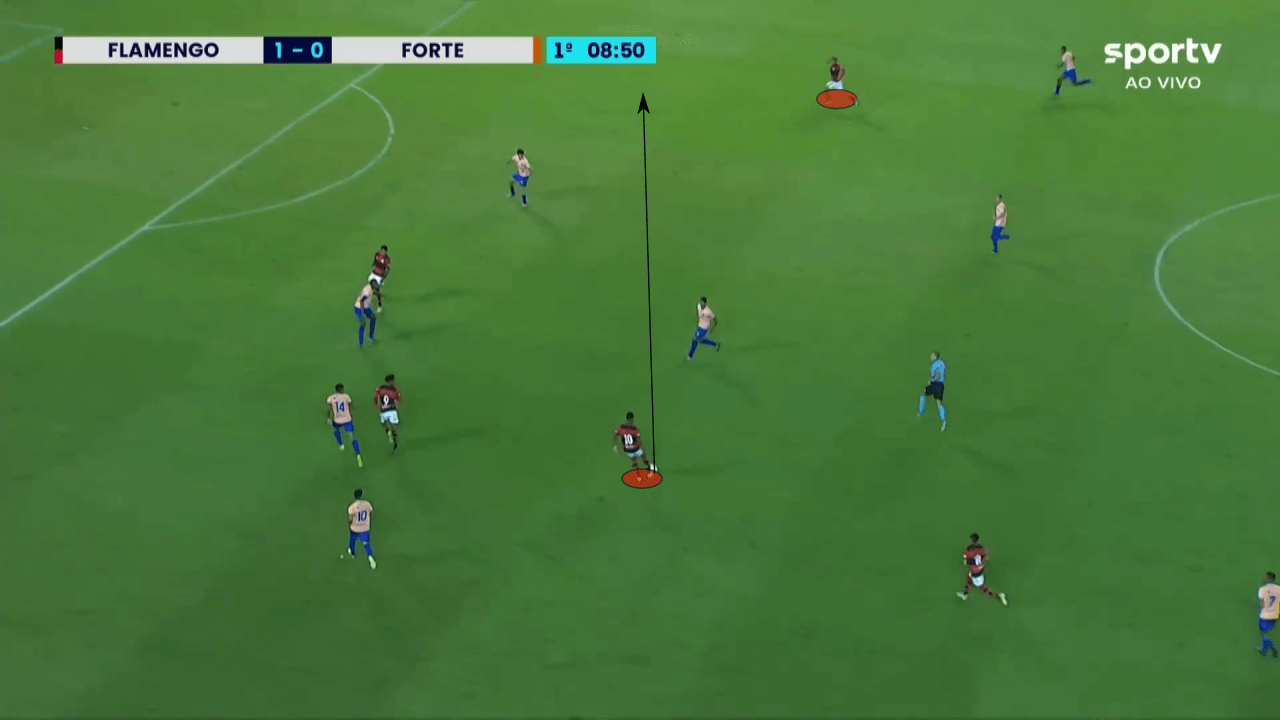
Matheus França’s movement is very good in creating space for his teammates. As Flamengo progress into the opposition half, Matheus drifts wide to receive the ball. There are two main reasons for doing this. First, he gives himself a better angle and is able to see the pitch better once he receives it. More importantly, though, he drags the defenders over and creates a channel for his teammate to run into.
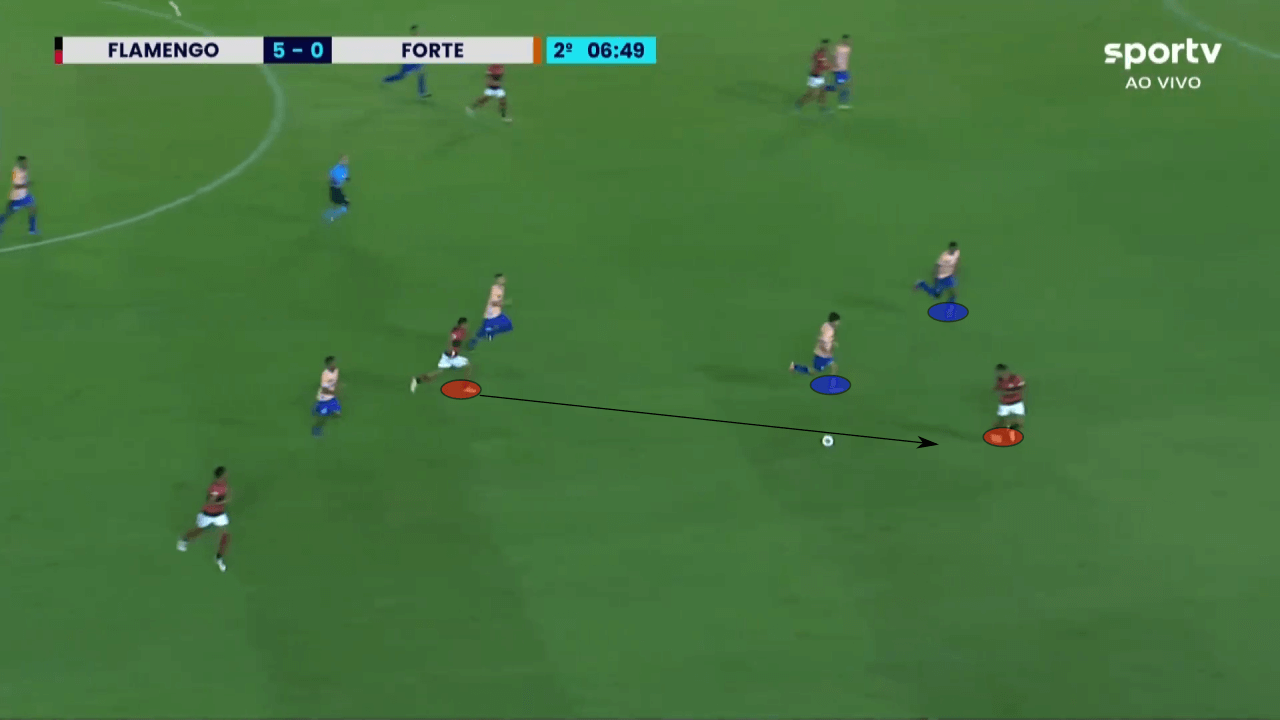
After receiving it wide, he plays it back to his teammate who has attacked the space created by França. Matheus puts him through on goal and assists yet another goal.
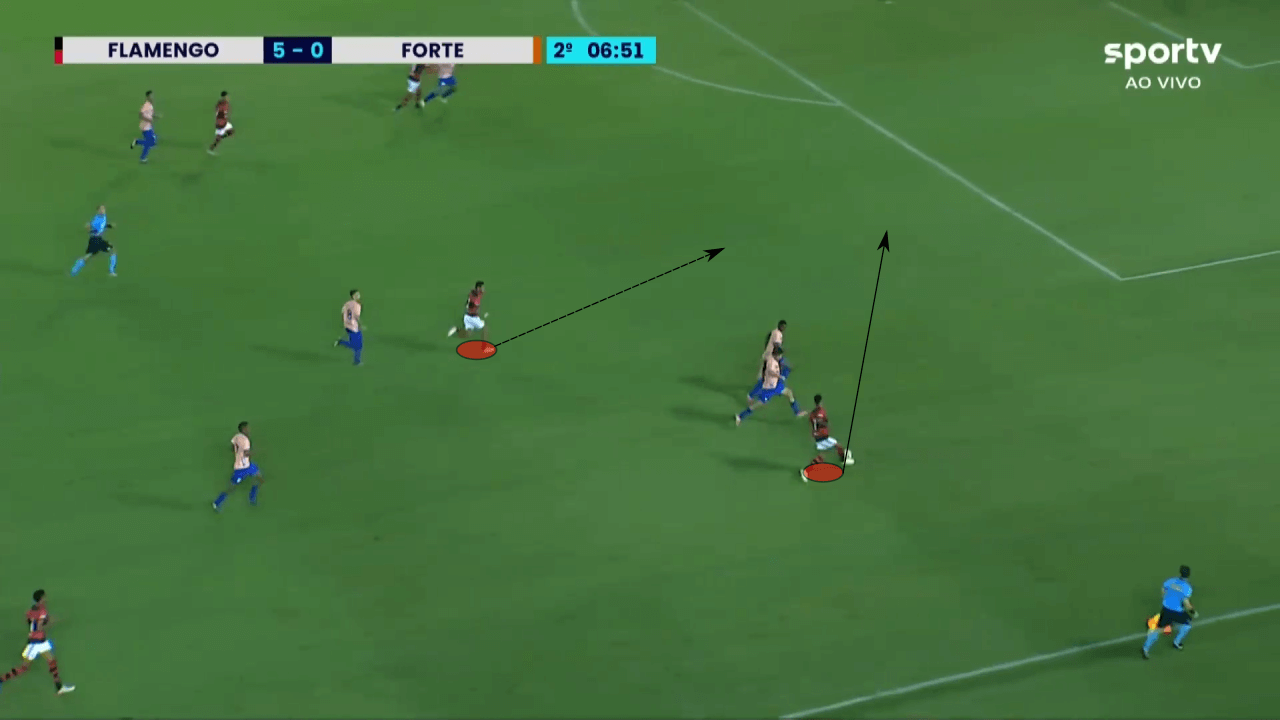
Matheus can also play a key role in transition as his vision and passing allow him to launch dangerous counterattacks. After the ball passes him, he places his body exactly in front of the opposition player, making it impossible for him to win the ball without committing a foul.
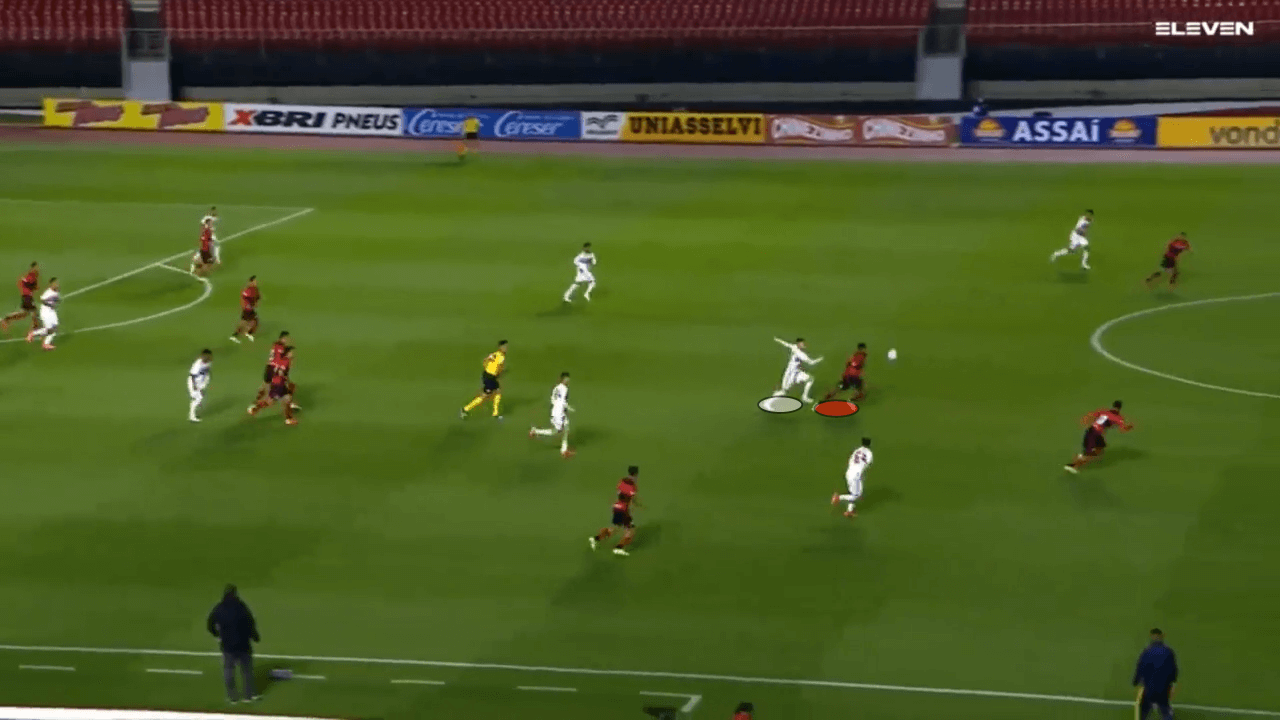
Matheus then carries it further up the pitch until the opposition centre-back commits to him. As the centre-back steps up to mark him, he leaves space behind. Matheus sees this space and plays his teammate through.
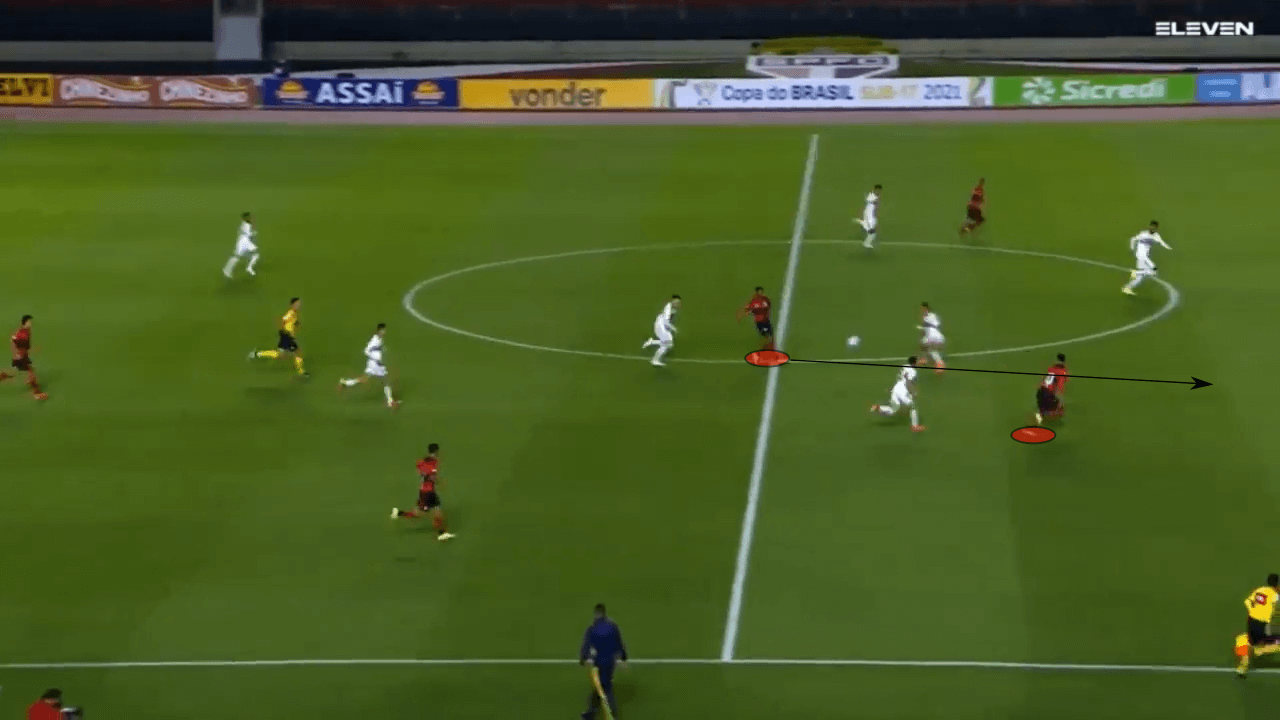
Matheus’ quality on and off the ball allows him to play a key role in possession. Whether assisting goals or progressing through the zones, he is able to be very effective for his team in attack. While he has an impressive passing ability, it is his movement and intelligence that enable this ability and make him so dangerous.
Final third
Just as in earlier stages, Matheus is very effective in the final third. His movement off the ball sees him attacking the depth and getting into dangerous areas. Whether as a centre-forward or an attacking midfielder, he will constantly look to get on the ball and make runs. In his career so far, he has averaged 2.76 shots per 90 and 2.76 crosses per 90. He also averages 4.02 passes to the penalty area per 90. His production in the final third is well-rounded and significant. The map below illustrates his penalty area deliveries and how he is able to find his teammates in perhaps the most dangerous section of the pitch.
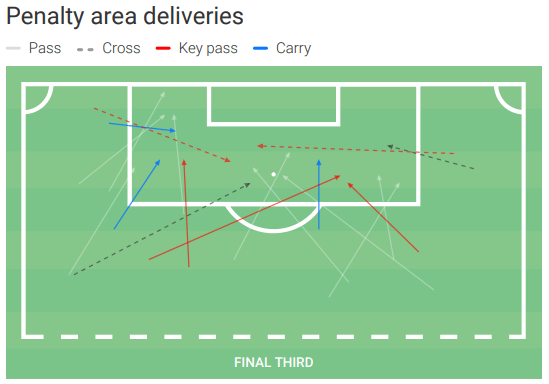
His 2.76 shots per 90 are relatively high for a player who is not a traditional centre-forward. While his shot map can certainly improve, he already takes a fairly good amount of shots from very good locations.
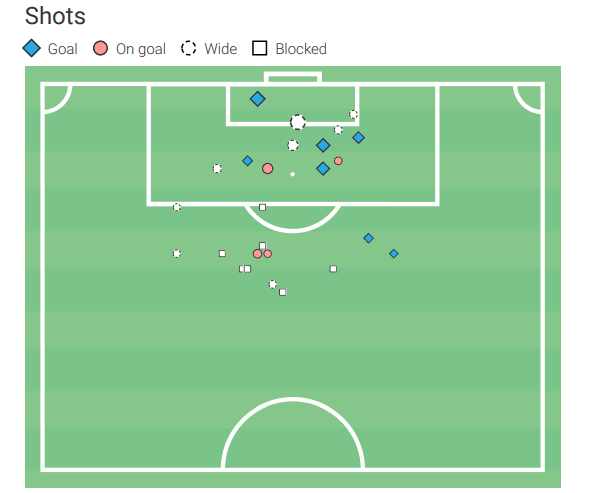
A lot of his goals come from arriving late into the box, whether to finish a second chance or receive a cutback. In the instance below, he comes from behind to finish a loose chance by placing it in the bottom left-hand corner with power.
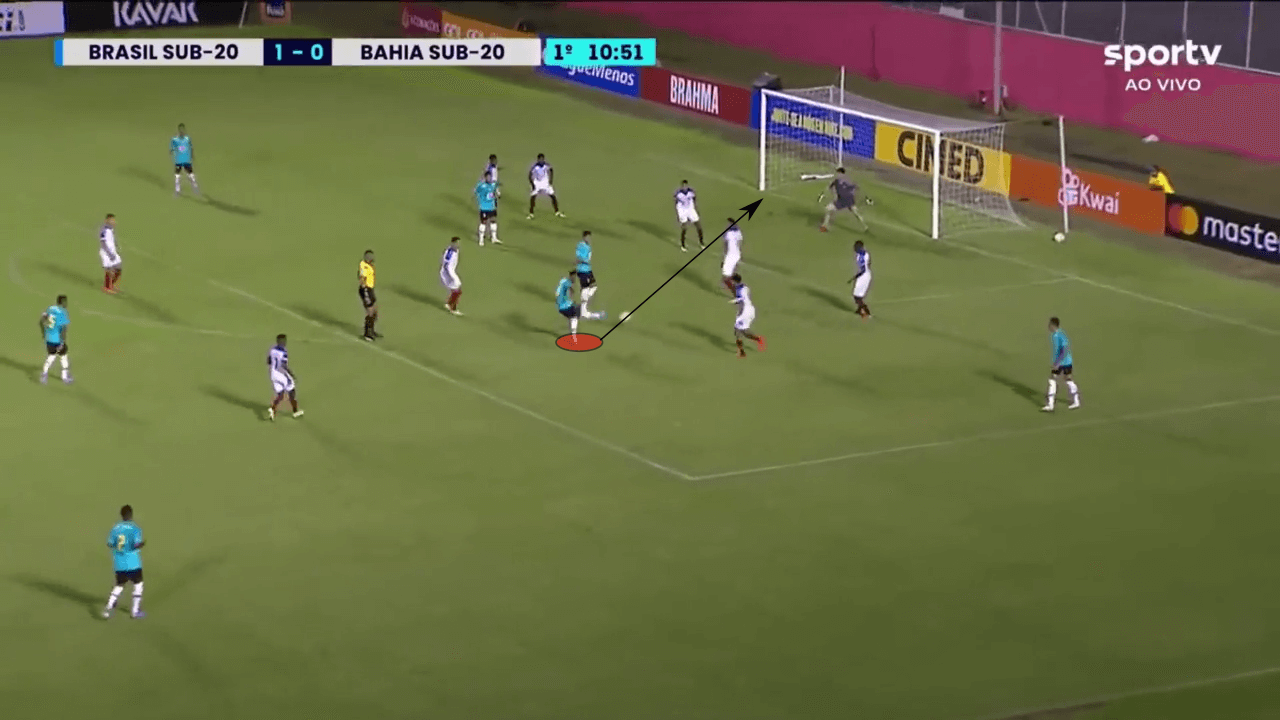
As stated, he likes to attack the depth with frequency as well. With speed and composure, he is often able to make the most out of these balls. In the friendly below, he receives a through-ball and beats the defender with a quick touch before calmly placing it into the right-hand corner.
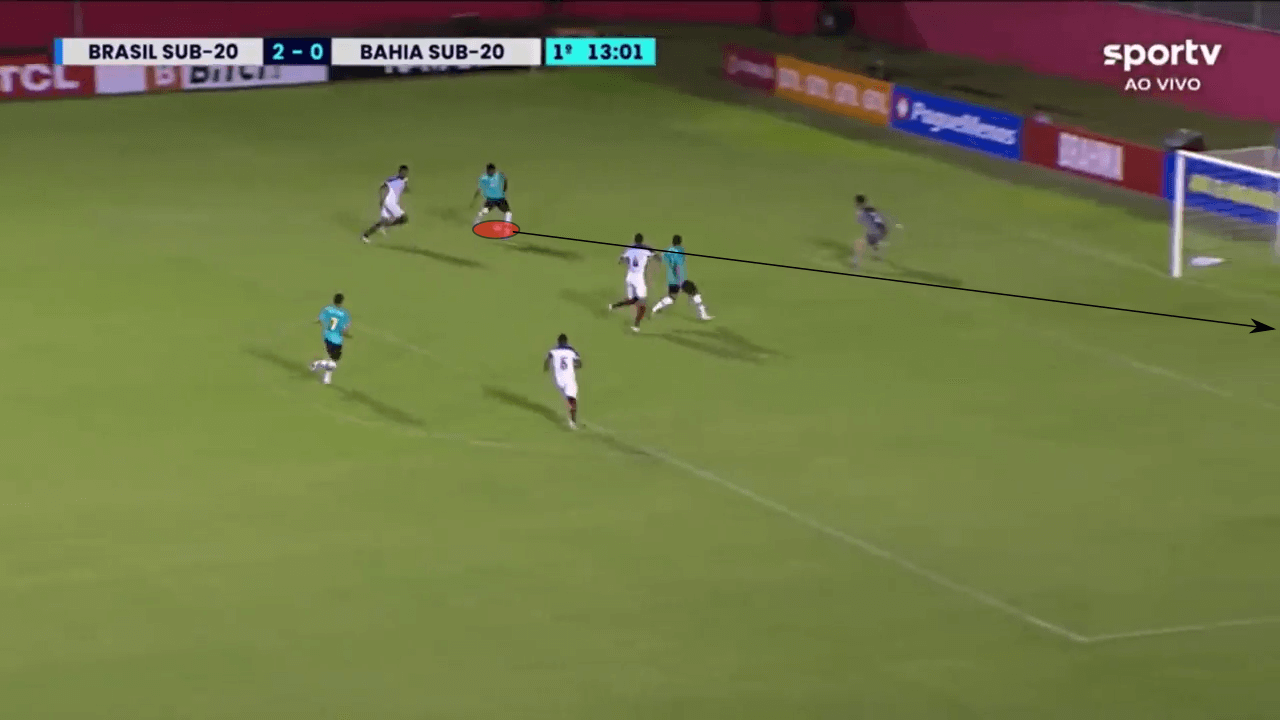
Attacking the depth is especially effective when playing as the last man. By doing so, he is able to stretch the defence and create space. In the instance below, he makes a run into the box as his teammate drives inside.
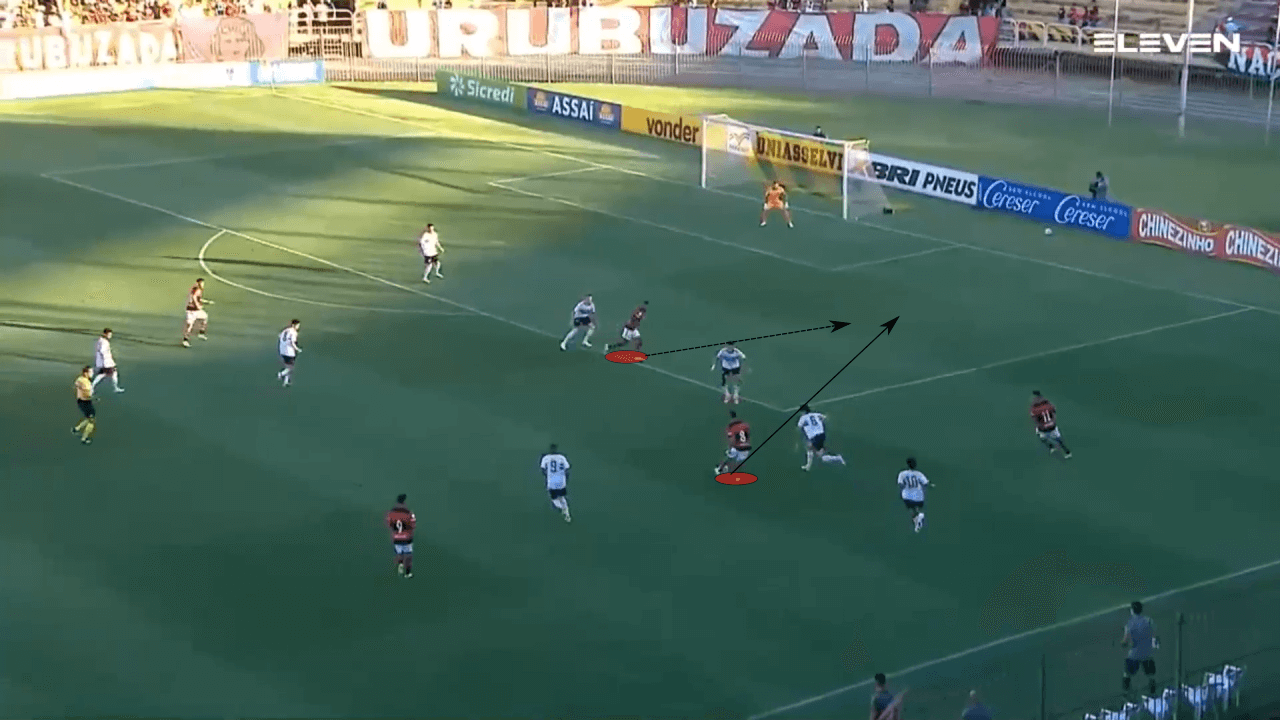
This run drags the defence deeper and creates space in the box for his teammates to attack. After receiving it, he cuts it back for his teammate to score.
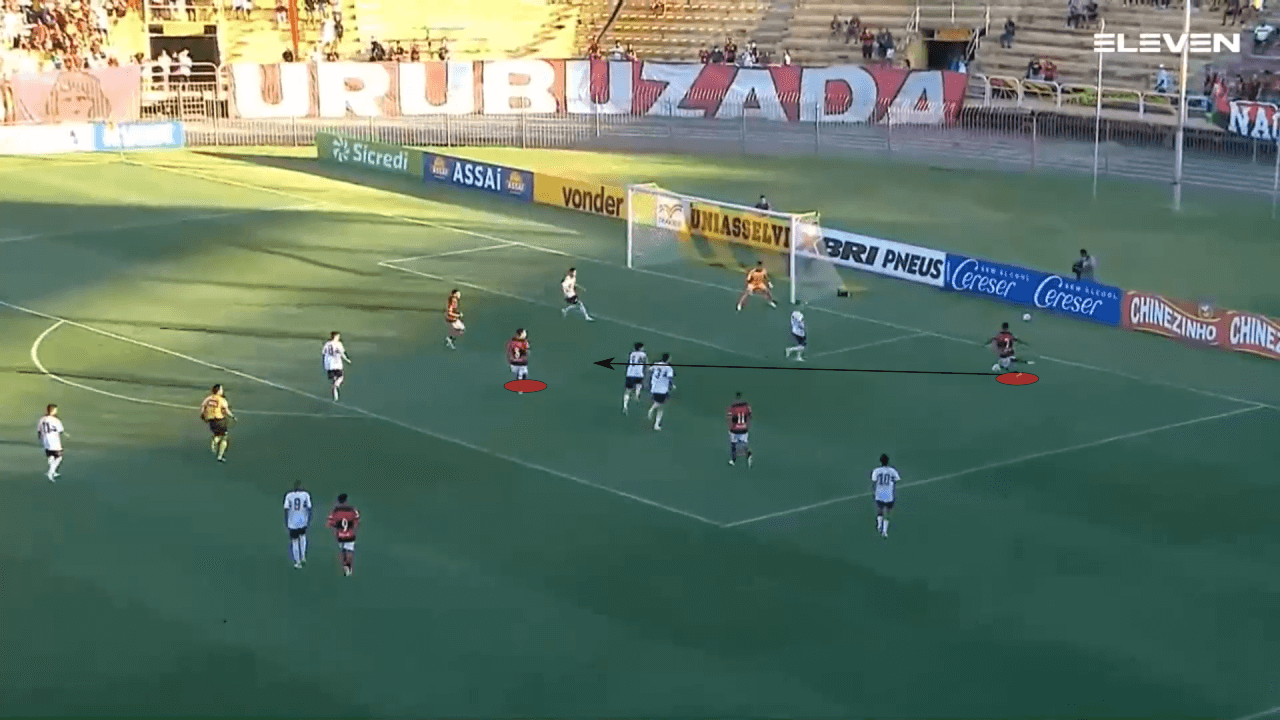
Now in transition, Matheus receives a ball into space. As he reaches the box, he performs a start-and-stop move to create just enough space to cross the ball. He plays a low ball across the middle for his teammate who is able to finish it.
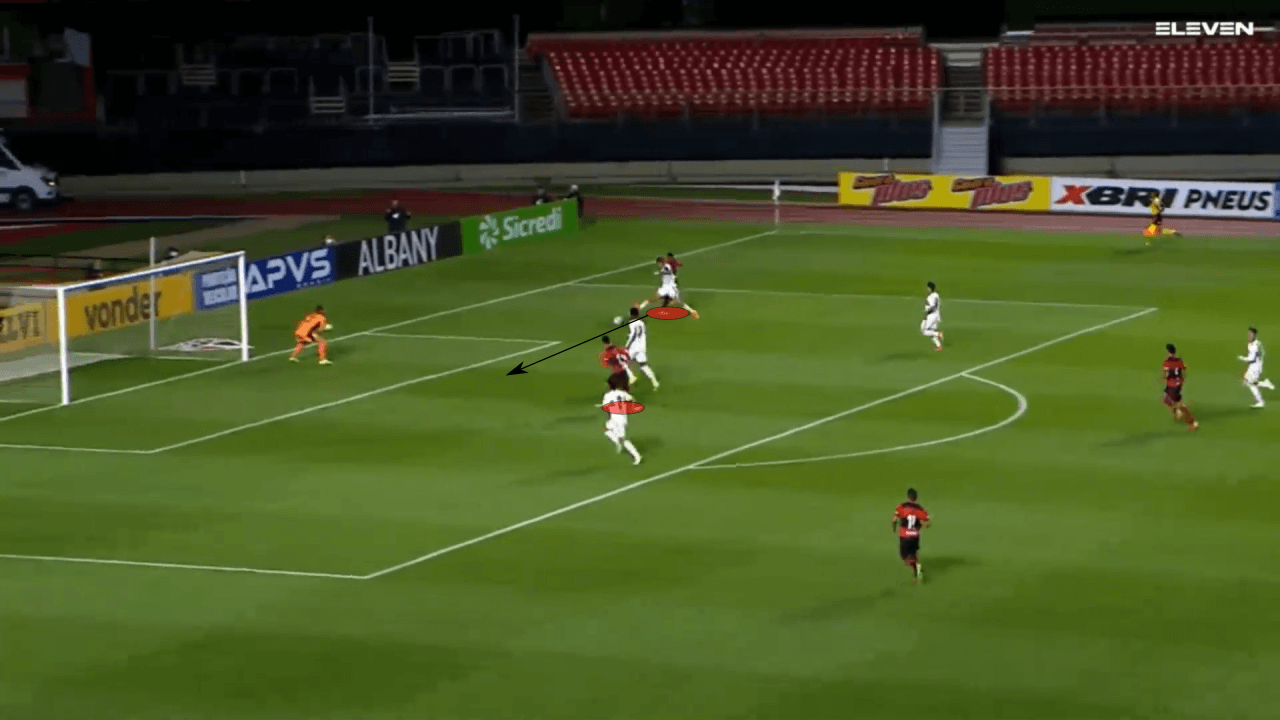
Matheus is also effective in getting to the assist zone from wide areas. This time, he receives it near the touchline with a defender on him. He performs a quick dribble to get past him and then cuts it back for his teammate in a very similar fashion. Quite a few of his assists tend to come from low crosses as he is very good at creating these chances.
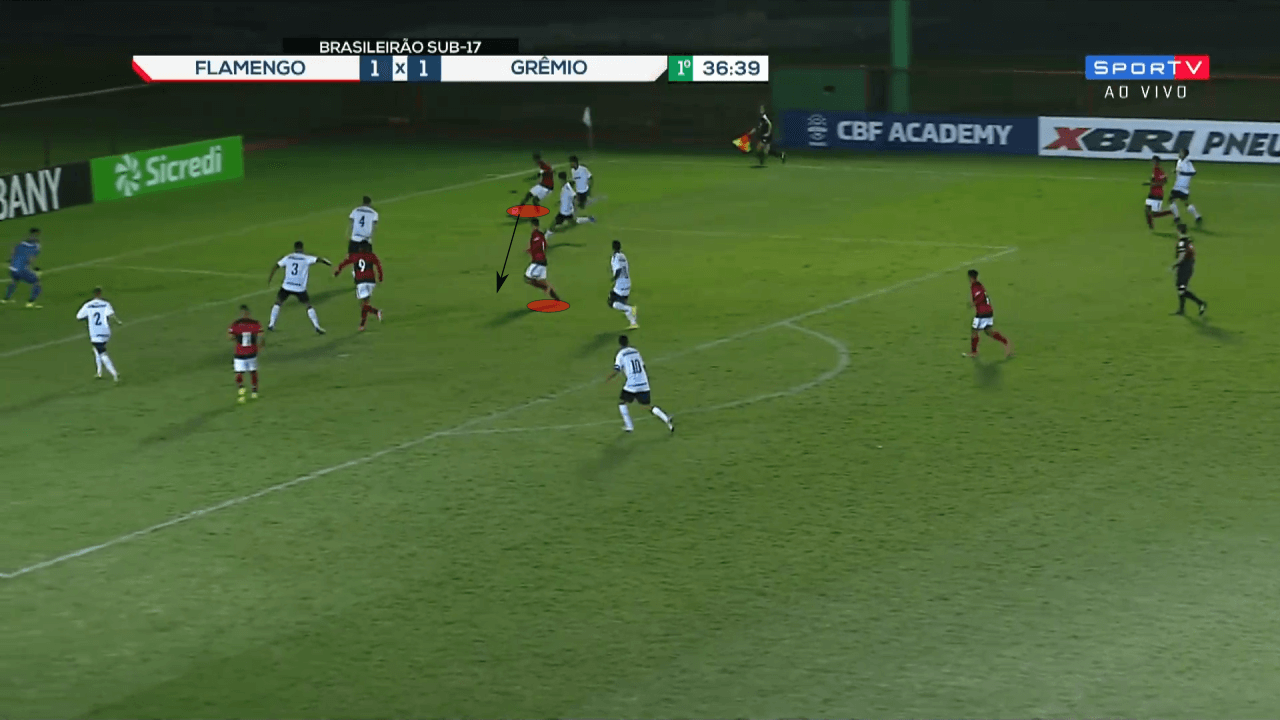
Against Fortaleza, Matheus creates a very good chance by combining with his teammates. While his teammate has the ball wide, Matheus checks in to receive the ball.
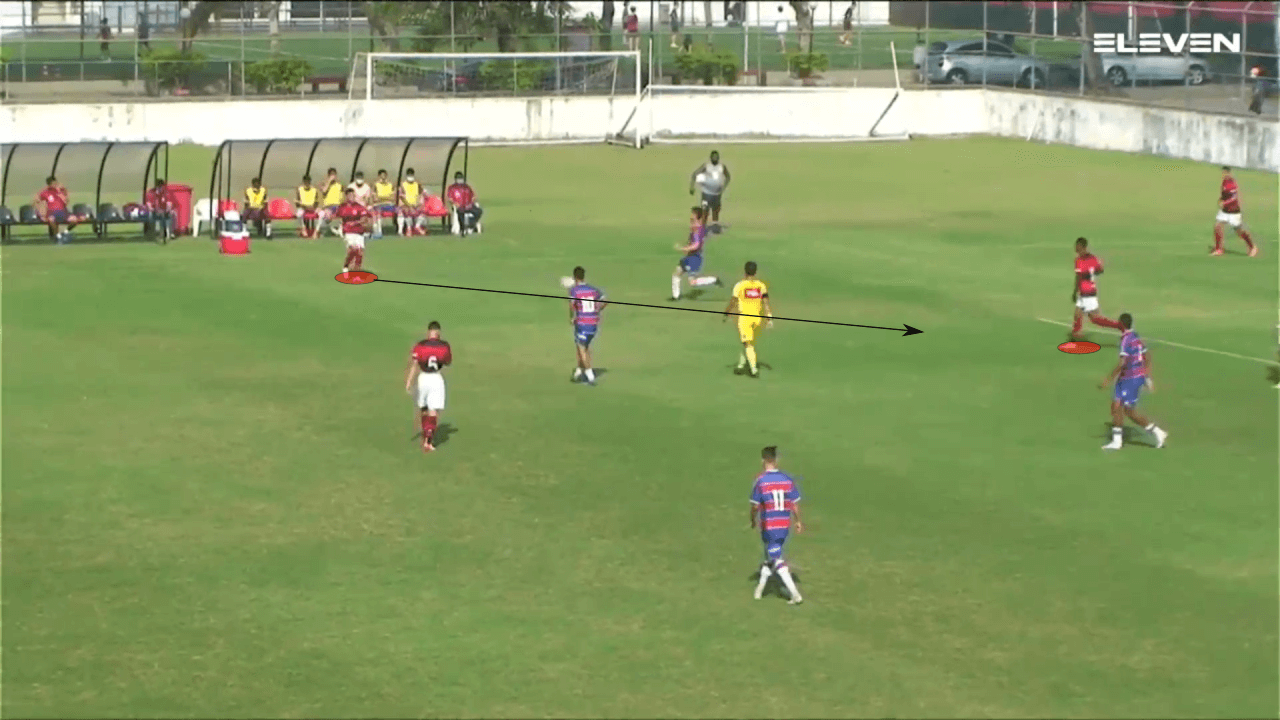
After receiving it, he turns inside to play with Lázaro. He lays him off and immediately makes a run in behind.
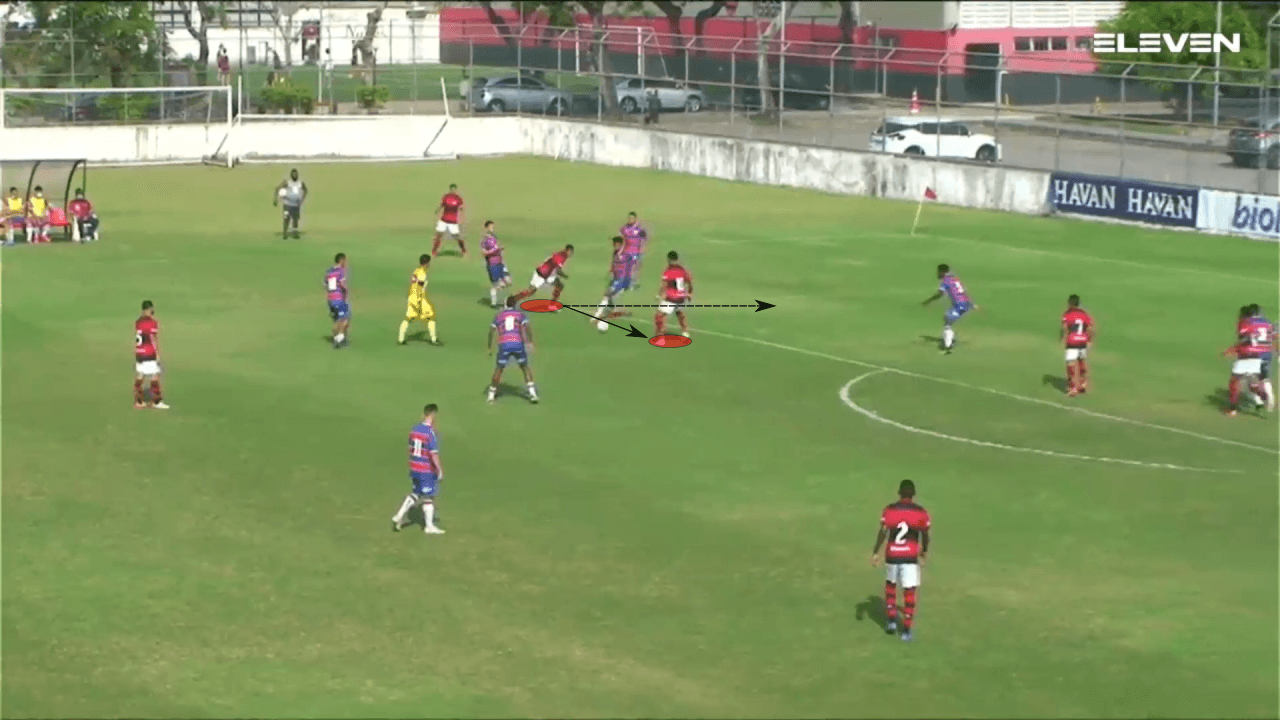
After receiving it back, he plays a low cross to his teammate who is able to finish the chance. His movement to drop in and combine with Lázaro allowed them to create a very good opportunity.
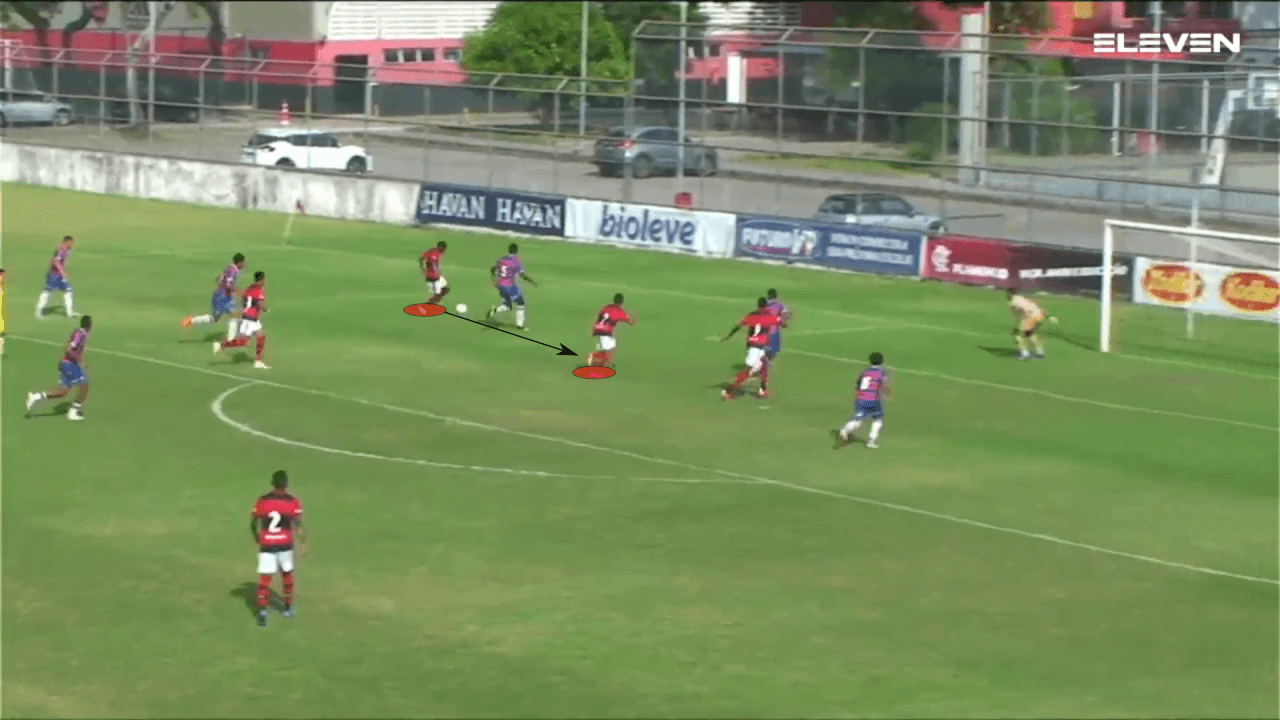
Matheus França’s abilities make him a very dynamic threat in attack. He is able to create chances both with and without the ball, being very intelligent with his movement and passing. While his awareness and technique allow him to create space and chances against lower blocks, he is also able to play in transition with his quick thinking and speed. As a consequence, if further developed, Matheus would fit in either a more controlled, possession-based team or a more vertical, transition-based team.
His optimal roles are either as a false nine or an attacking number 10. While he can play on the wing or as a traditional centre-forward, this would limit his creative ability and involvement in possession. When able to roam centrally and get involved in earlier stages of possession as well as the final third, his contribution is maximised.
Pressing
Finally, pressing is another strength of França’s game. He is able to press very intelligently, angling his runs and often recovering the ball. His recoveries map below shows how often he recovers the ball, but most importantly, how often it is in counter-pressing situations. Matheus has a natural instinct to automatically press after losing the ball, a trait very much desirable.
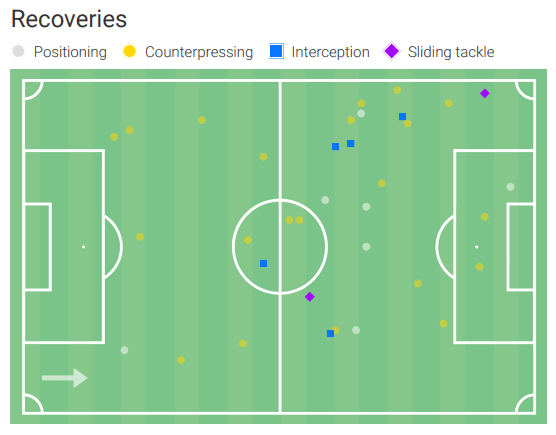
Matheus França’s pressing is very aware. His speed and physicality see him closing players down and winning defensive duels. His awareness also sees him trapping players very intelligently. In the instance below, for example, he notices the defender take a bad touch and jumps on him from a different angle. This double-team of sorts easily allows them to recover the ball.
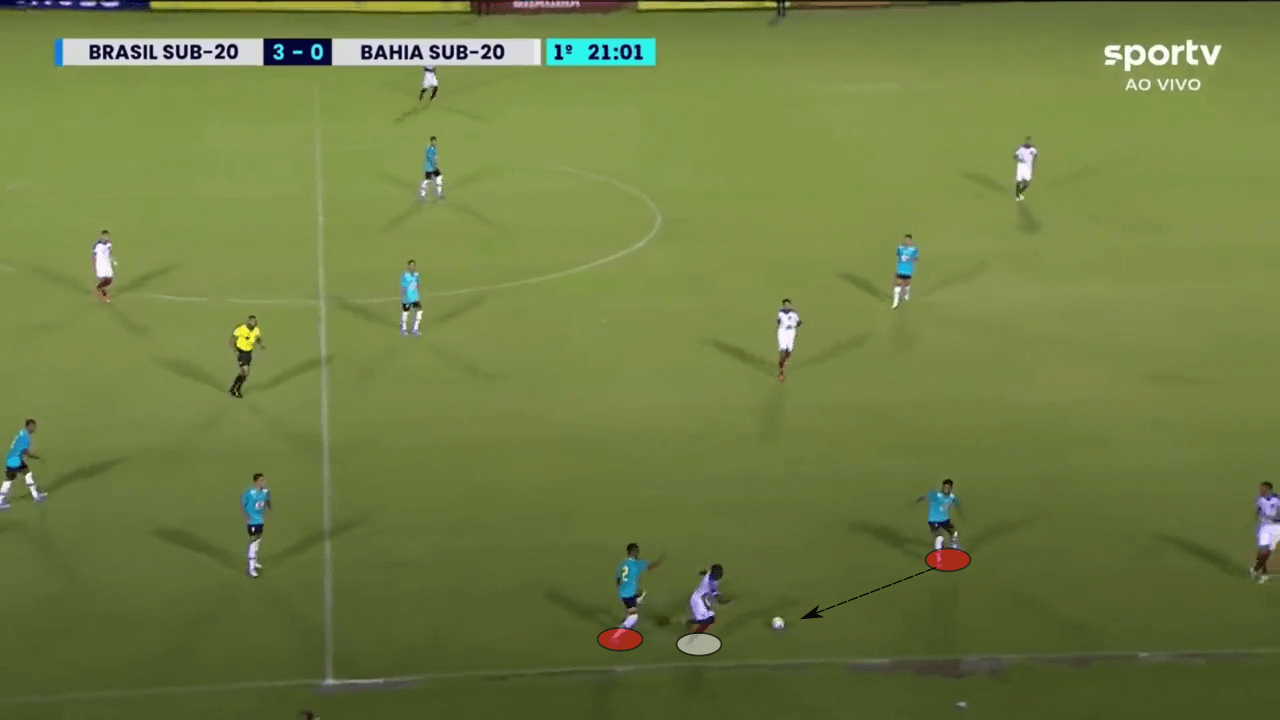
As noted, his speed plays a key role in his pressing. In the instance below, he starts fairly distant from the opposition player. However, he reads the pass and sprints towards the defender as the ball comes. As soon as the player takes a touch, he is already there to win it back.
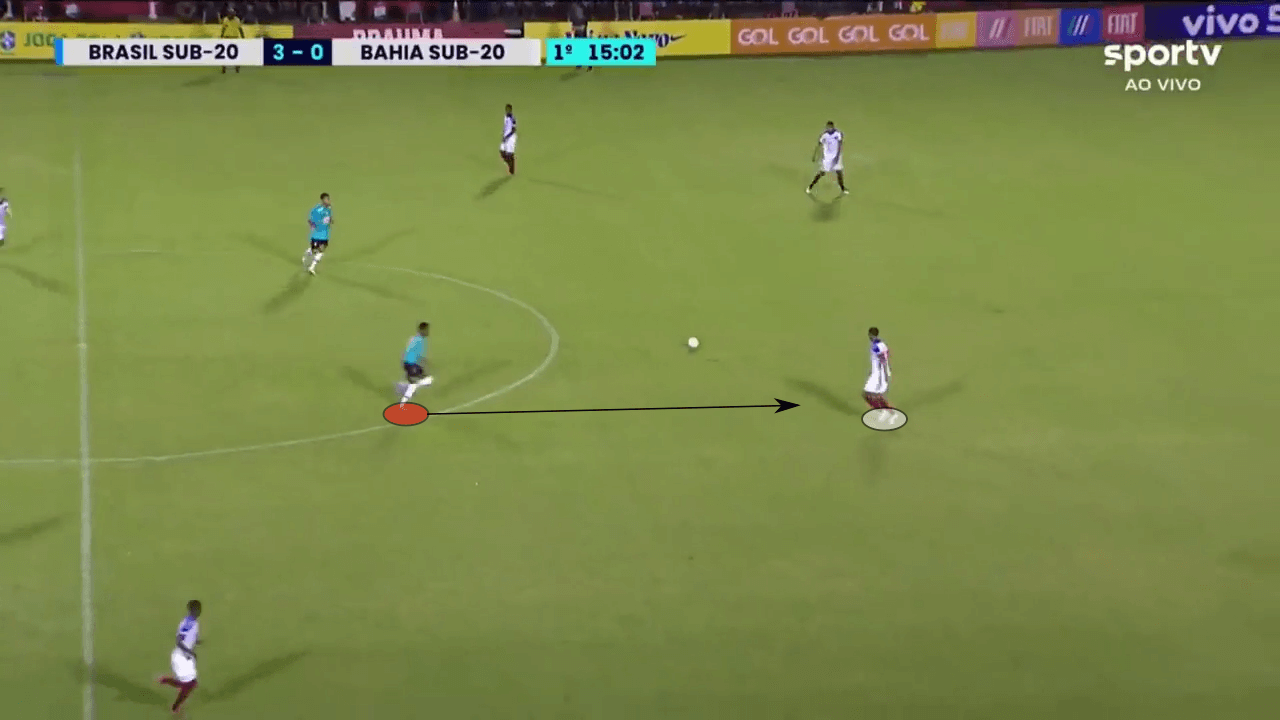
Matheus is also very good at immediately transitioning into attack after recovering the ball. Below, he is able to corner the opposition player in before making the tackle to win the ball.
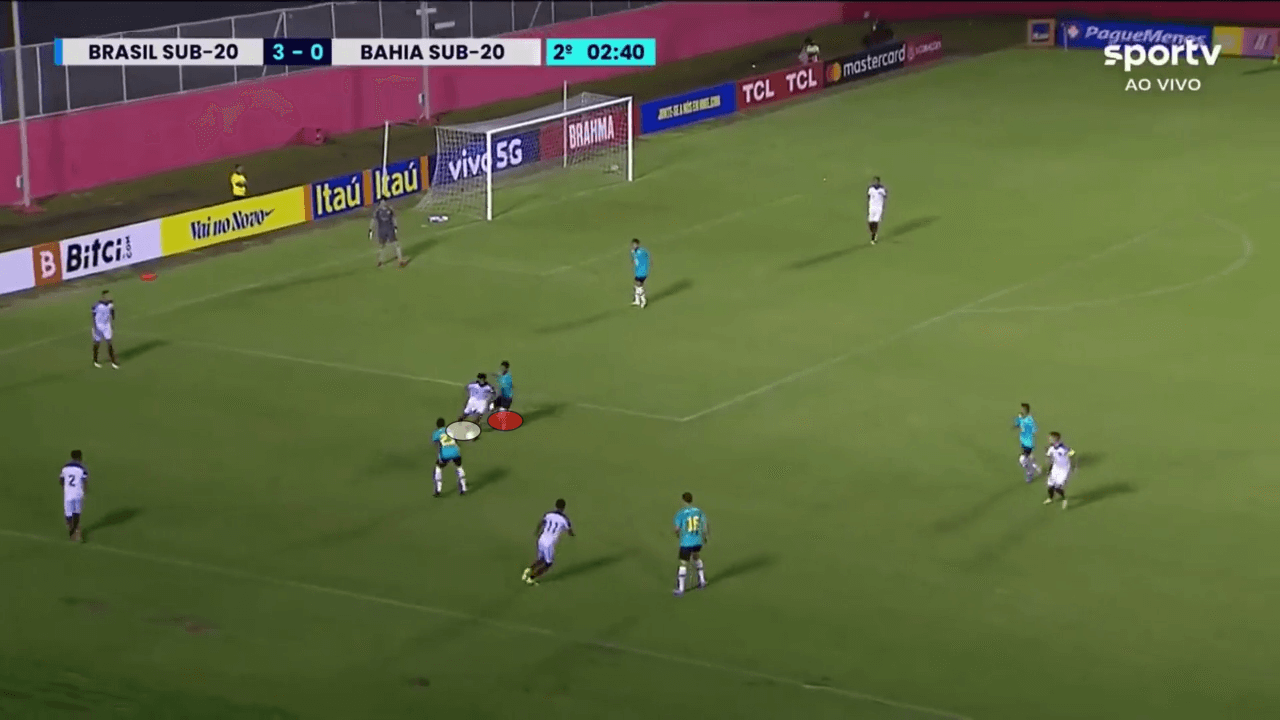
Immediately after winning it, he plays it to his teammate inside the box who then lays it off for another teammate to finish. While it did not turn into a goal, a great chance was created from his pressing work.
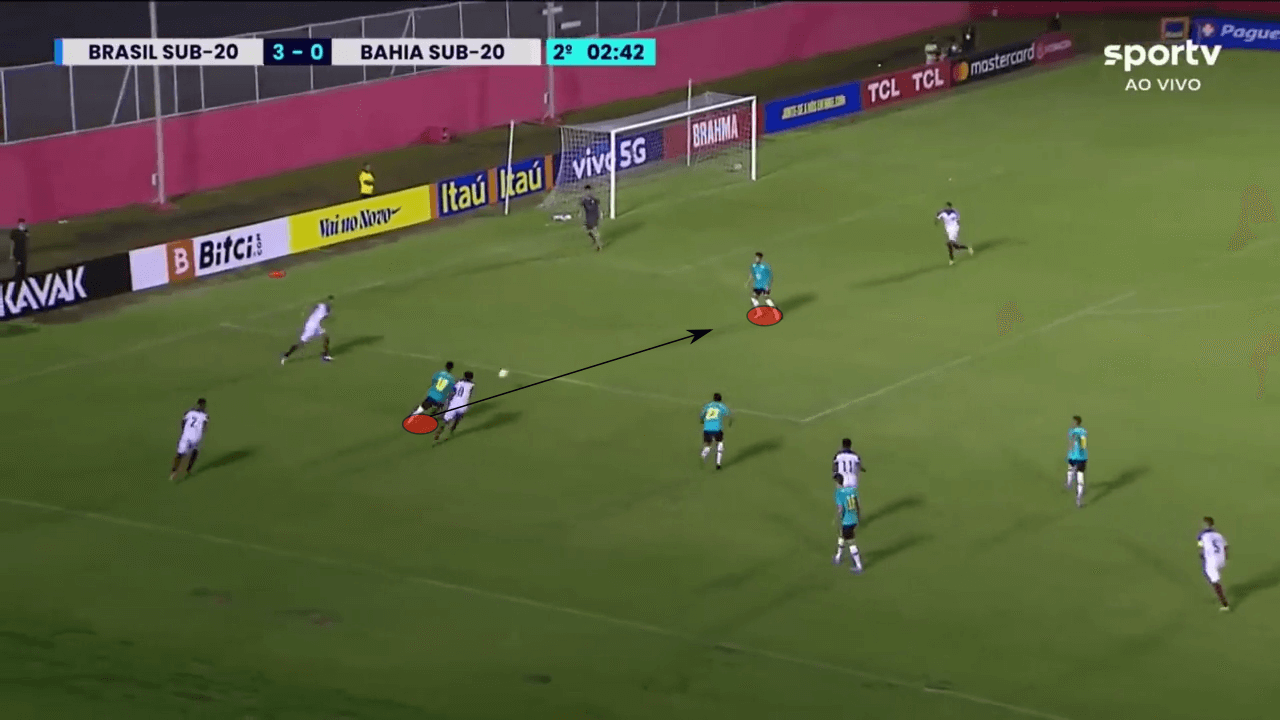
A similar instance took place against São Paulo. As the opposition player carries it up the pitch, Matheus goes to challenge it. After going shoulder to shoulder, he places his body in front of the ball and causes the opposition player to lose balance.
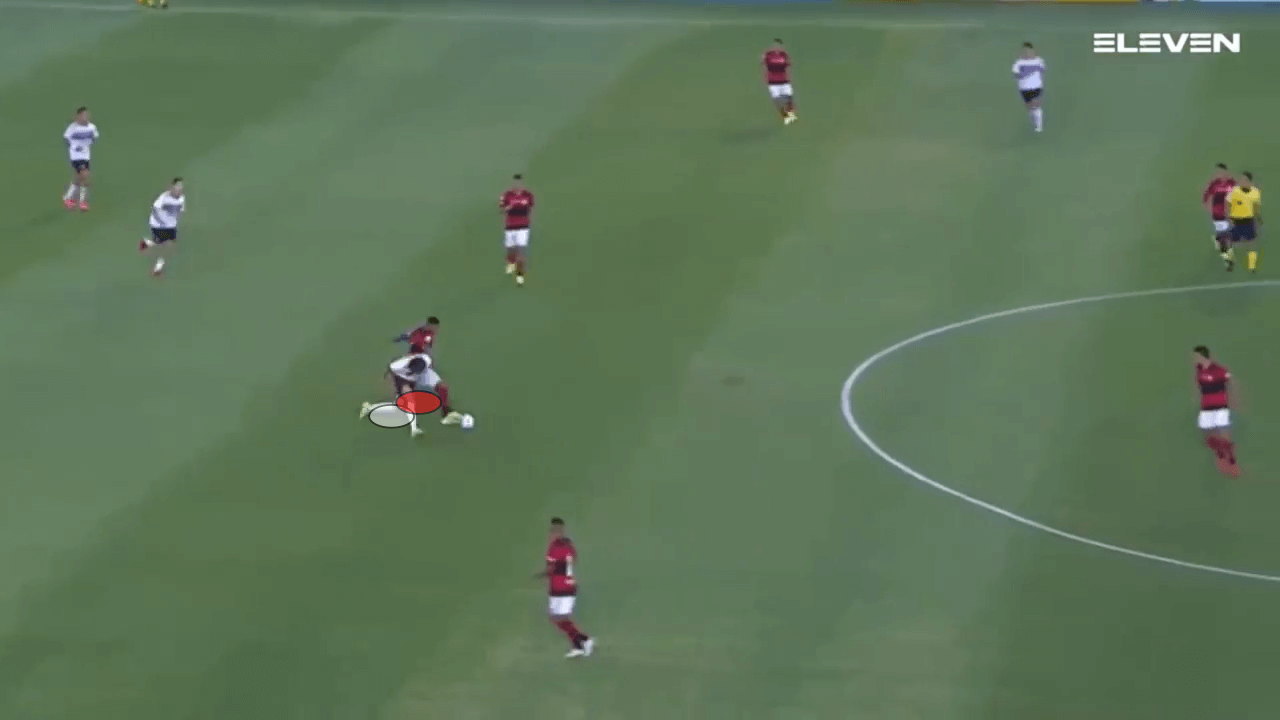
He immediately turns and begins a counterattack. After dribbling it forward, he plays it into space for his teammate. Again, it did not amount to anything but the willingness to work hard off the ball and immediately transition into an attack is very impressive.
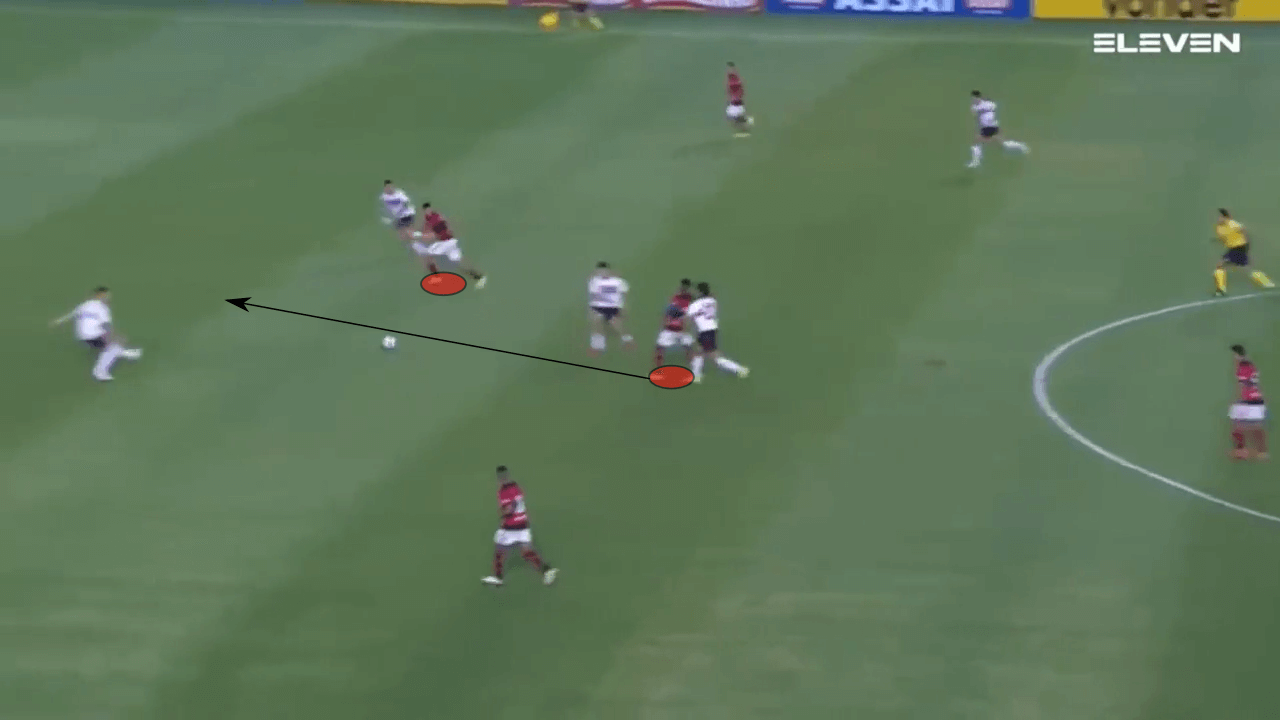
Conclusion
While still very young, Matheus França is a very exciting talent to watch. He has not featured much in Flamengo’s star-filled team, but he is perhaps currently the most promising talent in Flamengo’s academy. His talent is rather unique for a young player as a lot of his game is based around his awareness, intelligence, and technique. His involvement in possession and ability to create are things to build around. While he is versatile as far as positioning, his optimal role is centrally with the freedom to roam. He is able to be effective in earlier stages of possession as well as in the final third.
He is also very well-rounded and would fit in various tactical systems, however, I believe he would be best used in a possession-based side. His movement and positioning off the ball would help break down and disorganise lower defensive blocks. His quality on the ball would be much more appreciated and effective in this system. At any rate, he would still be able to perform in more vertical teams as he has the speed and quick thinking to do so.
According to Transfermarkt, his current contract expires in June of 2027. Flamengo have time to break him into the first team, but the interest in him is already starting to increase. It will be interesting to see how the Rubro-Negro develop him.




Comments